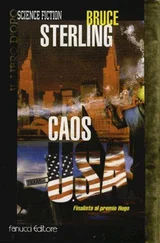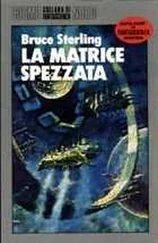Bruce Sterling - Essays. FSF Columns
Здесь есть возможность читать онлайн «Bruce Sterling - Essays. FSF Columns» весь текст электронной книги совершенно бесплатно (целиком полную версию без сокращений). В некоторых случаях можно слушать аудио, скачать через торрент в формате fb2 и присутствует краткое содержание. Жанр: Фантастика и фэнтези, на английском языке. Описание произведения, (предисловие) а так же отзывы посетителей доступны на портале библиотеки ЛибКат.
- Название:Essays. FSF Columns
- Автор:
- Жанр:
- Год:неизвестен
- ISBN:нет данных
- Рейтинг книги:3 / 5. Голосов: 1
-
Избранное:Добавить в избранное
- Отзывы:
-
Ваша оценка:
- 60
- 1
- 2
- 3
- 4
- 5
Essays. FSF Columns: краткое содержание, описание и аннотация
Предлагаем к чтению аннотацию, описание, краткое содержание или предисловие (зависит от того, что написал сам автор книги «Essays. FSF Columns»). Если вы не нашли необходимую информацию о книге — напишите в комментариях, мы постараемся отыскать её.
Essays. FSF Columns — читать онлайн бесплатно полную книгу (весь текст) целиком
Ниже представлен текст книги, разбитый по страницам. Система сохранения места последней прочитанной страницы, позволяет с удобством читать онлайн бесплатно книгу «Essays. FSF Columns», без необходимости каждый раз заново искать на чём Вы остановились. Поставьте закладку, и сможете в любой момент перейти на страницу, на которой закончили чтение.
Интервал:
Закладка:
surgery, actually gluing human flesh and viscera to replace sutures
and hemostats. And Superglue is quite an old hand at attaching fake
fingernails -- a practice that has sometimes had grisly consequences
when the tiny clear superglue bottle is mistaken for a bottle of
eyedrops. (I haven't the heart to detail the consequences of this
mishap, but if you're not squeamish you might try consulting The
Journal of the American Medical Association, May 2, 1990 v263 n17
p2301).
Superglue is potent and almost magical stuff, the champion of
popular glues and, in its own quiet way, something of an historical
advent. There is something pleasantly marvelous, almost Arabian
Nights-like, about a drop of liquid that can lift a ton; and yet one can
buy the stuff anywhere today, and it's cheap. There are many urban
legends about terrible things done with superglue; car-doors locked
forever, parking meters welded into useless lumps, and various tales
of sexual vengeance that are little better than elaborate dirty jokes.
There are also persistent rumors of real-life superglue muggings, in
which victims are attached spreadeagled to cars or plate-glass
windows, while their glue-wielding assailants rifle their pockets at
leisure and then stroll off, leaving the victim helplessly immobilized.
While superglue crime is hard to document, there is no
question about its real-life use for law enforcement. The detection
of fingerprints has been revolutionized with special kits of fuming
ethyl-gel cyanoacrylate. The fumes from a ripped-open foil packet of
chemically smoking superglue will settle and cure on the skin oils
left in human fingerprints, turning the smear into a visible solid
object. Thanks to superglue, the lightest touch on a weapon can
become a lump of plastic guilt, cementing the perpetrator to his
crime in a permanent bond.
And surely it would be simple justice if the world's first
convicted superglue mugger were apprehended in just this way.
"Creation Science"
In the beginning, all geologists and biologists were creationists.
This was only natural. In the early days of the Western scientific
tradition, the Bible was by far the most impressive and potent source
of historical and scientific knowledge.
The very first Book of the Bible, Genesis, directly treated
matters of deep geological import. Genesis presented a detailed
account of God's creation of the natural world, including the sea, the
sky, land, plants, animals and mankind, from utter nothingness.
Genesis also supplied a detailed account of a second event of
enormous import to geologists: a universal Deluge.
Theology was queen of sciences, and geology was one humble
aspect of "natural theology." The investigation of rocks and the
structure of the landscape was a pious act, meant to reveal the full
glory and intricacy of God's design. Many of the foremost geologists
of the 18th and 19th century were theologians: William Buckland,
John Pye Smith, John Fleming, Adam Sedgewick. Charles Darwin
himself was a one-time divinity student.
Eventually the study of rocks and fossils, meant to complement
the Biblical record, began to contradict it. There were published
rumblings of discontent with the Genesis account as early as the
1730s, but real trouble began with the formidable and direct
challenges of Lyell's uniformitarian theory of geology and his disciple
Darwin's evolution theory in biology. The painstaking evidence
heaped in Lyell's *Principles of Geology* and Darwin's *Origin of
Species* caused enormous controversy, but eventually carried the
day in the scientific community.
But convincing the scientific community was far from the end
of the matter. For "creation science," this was only the beginning.
Most Americans today are "creationists" in the strict sense of
that term. Polls indicate that over 90 percent of Americans believe
that the universe exists because God created it. A Gallup poll in
1991 established that a full 47 percent of the American populace
further believes that God directly created humankind, in the present
human form, less than ten thousand years ago.
So "creationism" is not the view of an extremist minority in our
society -- quite the contrary. The real minority are the fewer than
five percent of Americans who are strictly non-creationist. Rejecting
divine intervention entirely leaves one with few solid or comforting
answers, which perhaps accounts for this view's unpopularity.
Science offers no explanation whatever as to why the universe exists.
It would appear that something went bang in a major fashion about
fifteen billion years ago, but the scientific evidence for that -- the
three-degree background radiation, the Hubble constant and so forth
-- does not at all suggest *why* such an event should have happened
in the first place.
One doesn't necessarily have to invoke divine will to explain
the origin of the universe. One might speculate, for instance, that
the reason there is Something instead of Nothing is because "Nothing
is inherently unstable" and Nothingness simply exploded. There's
little scientific evidence to support such a speculation, however, and
few people in our society are that radically anti-theistic. The
commonest view of the origin of the cosmos is "theistic creationism,"
the belief that the Cosmos is the product of a divine supernatural
action at the beginning of time.
The creationist debate, therefore, has not generally been
between strictly natural processes and strictly supernatural ones, but
over *how much* supernaturalism or naturalism one is willing to
admit into one's worldview.
How does one deal successfully with the dissonance between
the word of God and the evidence in the physical world? Or the
struggle, as Stephen Jay Gould puts it, between the Rock of Ages and
the age of rocks?
Let us assume, as a given, that the Bible as we know it today is
divinely inspired and that there are no mistranslations, errors,
ellipses, or deceptions within the text. Let us further assume that
the account in Genesis is entirely factual and not metaphorical, poetic
or mythical.
Genesis says that the universe was created in six days. This
divine process followed a well-defined schedule.
Day 1. God created a dark, formless void of deep waters, then
created light and separated light from darkness.
Day 2. God established the vault of Heaven over the formless watery
void.
Day 3. God created dry land amidst the waters and established
vegetation on the land.
Day 4. God created the sun, the moon, and the stars, and set them
into the vault of heaven.
Day 5. God created the fish of the sea and the fowl of the air.
Day 6. God created the beasts of the earth and created one male and
one female human being.
On Day 7, God rested.
Humanity thus began on the sixth day of creation. Mankind is
one day younger than birds, two days younger than plants, and
slightly younger than mammals. How are we to reconcile this with
scientific evidence suggesting that the earth is over 4 billion years
old and that life started as a single-celled ooze some three billion
years ago?
The first method of reconciliation is known as "gap theory."
The very first verse of Genesis declares that God created the heaven
and the earth, but God did not establish "Day" and "Night" until the
Читать дальшеИнтервал:
Закладка:
Похожие книги на «Essays. FSF Columns»
Представляем Вашему вниманию похожие книги на «Essays. FSF Columns» списком для выбора. Мы отобрали схожую по названию и смыслу литературу в надежде предоставить читателям больше вариантов отыскать новые, интересные, ещё непрочитанные произведения.
Обсуждение, отзывы о книге «Essays. FSF Columns» и просто собственные мнения читателей. Оставьте ваши комментарии, напишите, что Вы думаете о произведении, его смысле или главных героях. Укажите что конкретно понравилось, а что нет, и почему Вы так считаете.



